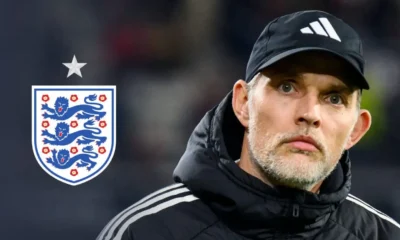
East African nations have not made appearance in the grandest stage of international football as compared to the all the five regions on the Continent.
The East Africa region is yet to produce a representative in the world cup competition.
The region has majorly taken part in other game competition such as Volleyball and athletics.
In athletics several East Africans have reached the pinnacle of their sport. Uganda’s Joshua Cheptegei and Ethiopia’s Almaz Ayana own the men’s and women’s 10 000m world records, respectively, while Kenya’s David Rudisha holds the world record in the men’s 800m.
Eliud Kipchoge a Kenyan athlete, with his phrase no human is limited which has resonated to inspire many, is the first man to run a full marathon in under two hours, albeit unofficially, and is considered one of the greatest marathoners of all time.
The Uganda women’s netball team are two-time African champions and participated in the World Netball World Cup and Commonwealth Games.
Kenya’s women’s volleyball outfit, the Malkia Strikers, are a record nine-time African champions, with several Olympic Games and FIVB World Championship appearances to boot.
Kenya and Uganda continue to challenge southern Africa in rugby sevens, even though the gap between them and powerhouse South Africa is still glaringly wide in 15-man rugby. Kenya has even qualified and reached the semifinals of the ICC Men’s Cricket World Cup. It all goes to show the sporting potential in East Africa.
But then which way football.
In the central-east zone of the Confederation of African Football consists of 11 teams which includes; Burundi, Djibouti, Eritrea, Ethiopia, Kenya, Rwanda, Somalia, South Sudan, Sudan, Tanzania and Uganda, but these teams have never tested the glory of football, which is to play at the World Cup, it has remained a mirage for these teams despite the sport being the region’s most followed.

Taifa stars squad; Photo Credit- Daily news
One of the reasons is the lack of a discernible style of football in East Africa. Regular World Cup participants and winners such as Brazil, Italy and Germany all have a unique brand of play that easily identifies them. Brazil’s “ginga”, for example, is a style of elegance and flair that is widely revered and recognized.
The same can be said about regular African qualifiers like Egypt, Morocco, Tunisia, Nigeria and Cameroon.
The ball moves much faster and is played with flair in the north, while in West and Central Africa it is often about impact play with individual strengths added.
But there is no such thing as a brand in either East Africa as a region or in its individual countries.
Veteran Kenyan sports journalist Daniel Wahome who works at state owned broadcaster KBC says the foundation of football in Kenya and the region is wrong.
“There’s no philosophy on how football is played in Kenya and the region at large.” Wahome said.
Wahome also says football in East Africa needs more investment in infrastructure and human resources if it wants to grow and improve.
“How many coaches from this region are qualified to handle continental games?” he posed.
Players
East Africa hardly ever exports talent to the top European leagues, notably those in Germany, Italy, England and France. One theory advanced to explain this is global scouts’ poor attitude towards the region, which they see strictly as a haven for runners.

McDonald Mariga, won the European Champions League with Inter Milan of Italy; photo Credit- The Goal
In the past decade or so, just three players from the region have made it to these leagues. Kenya produced McDonald Mariga, who won the European Champions League with Inter Milan of Italy, and his younger sibling Victor Wanyama, who featured for English sides Southampton and Tottenham Hotspur.
From Tanzania came Mbwana Samatta, who barely lasted at Aston Villa and eventually moved to Turkey.
Without good players, East African teams going to the World Cup will remain a tall mountain to climb.
Preparations for the World Cup
In a past interview with a local media outlet, Musa Otieno, 47, the most capped player of Kenya’s Harambee Stars and their former assistant coach, says the region’s Achilles Heel is poor preparation and a lack of business sense.
“Some [other] teams planned for Qatar 2022 qualifiers five years ago, so it’s just a matter of good planning. With good planning anything is possible.”
Otieno says with most domestic leagues in the region still being amateur or semi-professional, identifying and nurturing talent is never a structured process and talented players often go to waste. The business side of the game is hardly understood and sponsors shy away from football.
Otieno is also concerned that East African teams seldom maximize home ground advantage in their qualification campaigns.
This is already evident two rounds into the Qatar 2022 qualifiers, with only Ethiopia and Tanzania picking up home wins while Uganda, Rwanda and Kenya settled for draws.
Conclusion
East Africa should learn the hard lessons from other regions on the continent and invest in football.
Cameroon, the African team with the most World Cup appearances at seven, missed the last showpiece in Russia owing to the falling standards of the game in the West African country.
Reports from the country alleged that the domestic league was so poorly managed that talent wasn’t identified in-turn direct influencing on the national team’s performance.

Mbwana Samatta of Tanzania; Photo Credit- Daily news
In the past few years, club football has witnessed some growth in East Africa, albeit negligible.
The Tanzanian league is showing positive signs and getting players and coaches from across Africa. This has had a positive impact on the national team, the Taifa Stars, who qualified for the 2019 AFCON after a painfully long wait.
To qualify for the World Cup, however, this growth will have to be sustained in order to deliver enough world-class talent with enough experience to challenge the big boys of African football.
Otherwise, it will take a “miracle of biblical proportions” for an East African team to grace the World Cup stage.
I am a Multimedia Journalist with five years of experience from Digital to Broadcast Media{Radio and Television}. Interested in reporting Current affairs happenings within and across the borders. I have excellent attitude towards working with others and communication skills extremely patient and persistent with the ability to formulate unique ideas and hand eye co-ordination. Ability to work under minimal supervision, curious, hardworking and polite. In another life I am a News Anchor and Reporter.













You must be logged in to post a comment Login